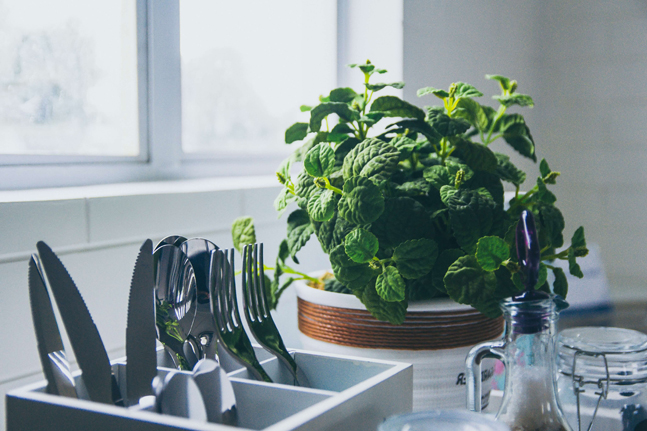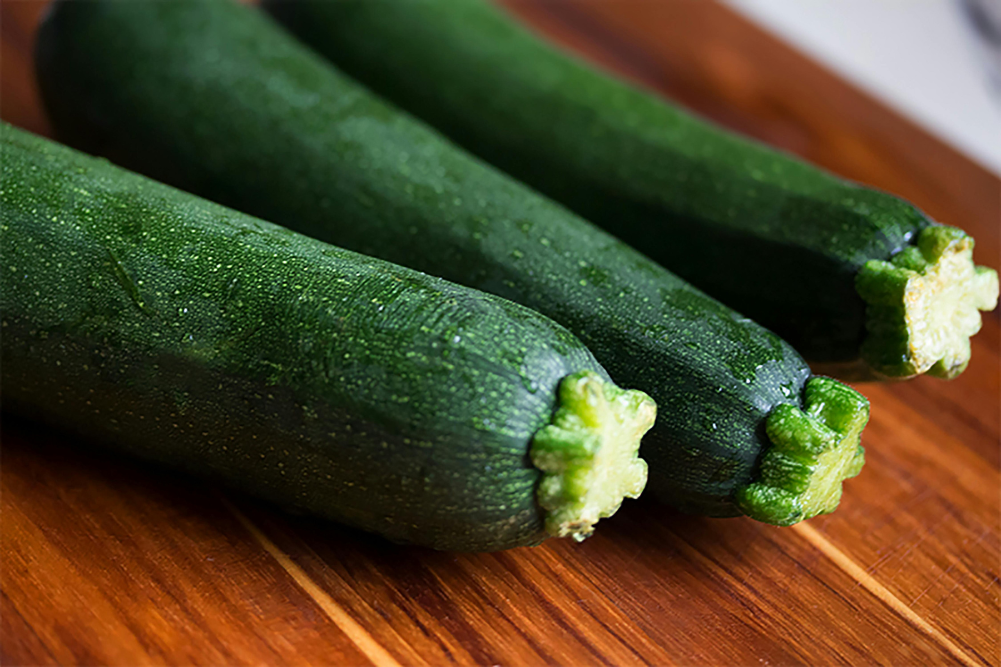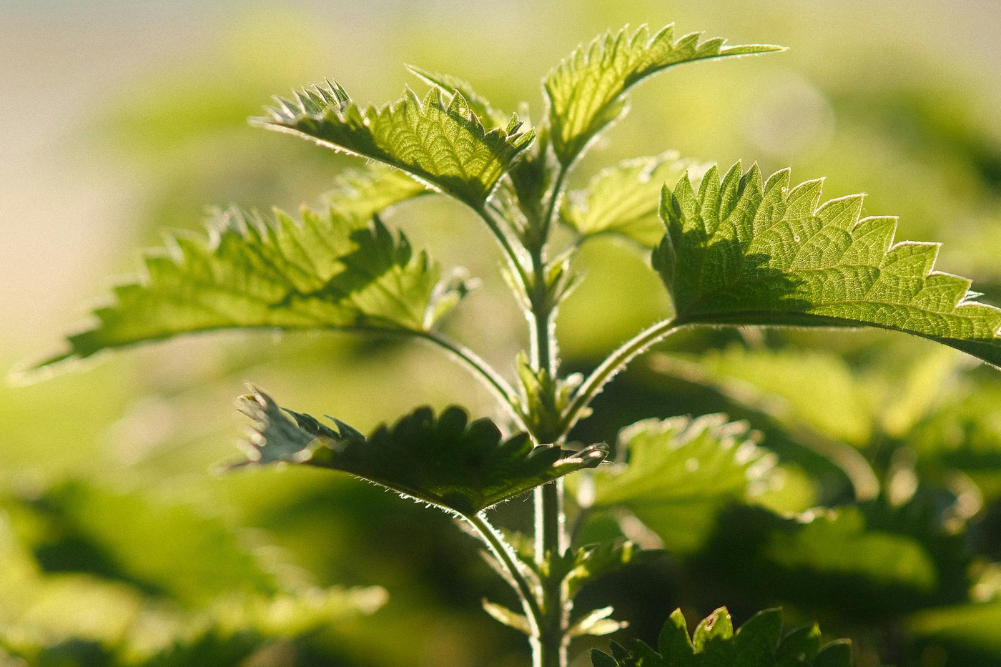14 sustainable kitchen hacks to help you lead a greener life
Are you guilty of putting your leftover food in the fridge only to rediscover it growing moss a week later? You’re not the only one. Australians throw out a whopping $8–10 billion worth of food every year, which eventually ends up in landfill.
The average Australian throws out one in every five shopping bags, which means we’re not using food as smartly as we should be. Fortunately, there are a few simple steps you can take to reduce your environmental footprint, create a more sustainable kitchen and save money while you’re at it.
1 Develop a weekly meal plan
Most food wastage comes from buying things you don’t need and from inadequate planning. To avoid ending up with four bags of sugar in the pantry next time you shop, it’s a good idea to shop from your fridge and pantry first. This way, you can plan your next meals around what needs to be eaten. Sounds simple, right? Before you go shopping, jot down your weekly meal plan with a detailed list of ingredients and make sure you stick to it to avoid getting sucked in by tempting offers and impulse buys at the supermarket checkout.
When a dish calls for two tomatoes, resist the temptation to buy a whole bag. Be honest with yourself. Unless you’re 100 per cent sure you are going to consume all of them before they go off, don’t buy them. It may sound like a no-brainer but never, ever shop on an empty stomach. You won’t believe the amount of time and money you will save.
Experiment with doing one batch-cook a week. Sunday afternoons can be a great time to get set up for the week ahead. This helps you to plan ahead and freeze extra meal portions if required. Sometimes life can get chaotic and plans can change, so it’s great to have an extra meal you can enjoy without the fuss.
2 Love your leftovers
Who said leftovers are boring? Try having a weekly Leftovers or Kitchen Sink night to use up all your yummy leftovers in the fridge and avoid any unused food ending up in landfill. Whip up a breakfast smoothie with all your leftover fruit, or use up leftover vegies in a soup or vegetable bake or a frittata for lunch the next day.
Another great way to use up leftover vegetables is to make homemade stock, which can then be stored in portions in the freezer. Or, if you’re running short of time, vegetable trimmings and bones can be stored in an airtight container in the freezer, ready to whip up a homemade stock when you have the chance. This is one of the easiest ways to reduce your food waste at home. It’s amazing how many delicious dishes you can create from leftovers if you get a bit creative.
3 Repurpose food waste
Too often we throw out food that’s not ideal to be consumed or doesn’t look good. Try using as much of your produce as possible when you’re cooking. Nose-to-tail cooking is a popular technique used by many leading restaurants around the world, and home cooks are starting to do the same.
Often the skin on fruit and vegetables is full of nutrients and fibre. But if eating fuzzy kiwi or peach skin isn’t a turn-on, try repurposing it by blending it into a smoothie to hide the texture. Try using up broccoli stalks and kale stems to beef up your next stir-fry. Stale bread is also great for converting into breadcrumbs for a schnitzel or burger mix.
4 When cooking, don’t over-serve food
Have you ever felt like your stomach was about to burst half an hour after a big meal? When you’re hungry it’s easy to eat with your eyes first rather than your stomach. Restaurants and cookbooks can often blow out portion sizes so people over-eat. A good trick to avoid over-serving is to use smaller plates and serve a small portion of food on your plate. If you want more you can always help yourself to seconds.
Wait 15 minutes and see if you are still hungry before filling up your plate again. When cooking rice or pasta, make sure you measure portion sizes to avoid two cups being left over at the end of each meal.
5 Compost your food scraps
About half of household garbage is made up of food and garden waste. By composting your food scraps, the amount of greenhouse gases produced by landfill is drastically reduced. Vegetable peel, fruit, tea bags, ground coffee and eggshells are all great examples of what can be composted.
To make it easier, keep a small bin in the kitchen that’s dedicated to food scraps. If you live in an apartment or are short of space, there are plenty of space-efficient composting kits that can be stored underneath the kitchen sink or on the balcony. You will notice a dramatic reduction in your household waste in no time.
Worm farms are also a great way of reducing food waste and they don’t smell. While worms aren’t fussy eaters, try to avoid dairy produce, meat or fish, bones and onions and garlic.
If you’re finding the idea of composting a little overwhelming, some local governments in Australia offer green organic bins, which can be used for food scraps and taken to local composters and repurposed. These bins are collected from households alongside regular garbage and recycling.
6 Smart storage
Correct storage is the key to keeping food fresh for longer. Take fruit and vegetables out of their bags so they don’t “sweat” and spoil, and place them in airtight containers to make them last longer. It’s always a good idea to check the use-by dates on perishable items and use the “first in first out” tactic, ensuring you move older products to the front so they are consumed first. Out of sight can definitely mean out of mind when it comes to your fridge.
It’s also good to know the difference between date labels: “use by” means the food must be eaten by that specific date, while “best before” means the food can be eaten after this date as long as it has been stored correctly.
Make friends with your freezer to store food that would otherwise go off. Most fruits can be frozen and defrost well, while some vegetables are best used in cooking once frozen. Try blanching them first to keep them fresher for longer. Did you know you can even freeze eggs? Just make sure they are cracked into an ice cube tray for easy storage before freezing.
7 Optimise your fridge
When was the last time you checked the temperature of your fridge? Make sure your fridge is functioning at maximum efficiency by giving it a regular maintenance check. One of the most common mistakes is setting the temperature of the fridge incorrectly. Foods can be accidentally frozen in the fridge if too cold, which often means it’s more costly to run. Keep your fridge at 3–4°C and -15–18°C for the freezer at all times.
Avoid the temptation to overcrowd your fridge, otherwise the air will not circulate efficiently and keep it cool. Fresh fruit and vegetables should be stored separately in the vegetable drawer. Always place the produce that spoils faster on top so you are more likely to consume them first.
8 Eat local and seasonal produce where possible
Eating local, seasonal produce is not only good for the environment but better for flavour, since the produce is picked closer to the time it will be eaten rather than being harvested early. It also has the added benefit of being cheaper since it’s at the peak of its supply, and storage, transport and refrigeration expenses are minimal. When you eat local, the money is more likely to go back into your local community, so it’s a double win.
9 Sustainable cleaning
Try sourcing sustainable and natural cleaning products whenever possible to minimise your exposure to strong chemicals and bleaches. Fortunately, there are plenty of natural plant-based detergents using non-toxic and biodegradable packaging on the market. Experiment with natural cleaning alternatives like vinegar, baking soda and lemon juice, which are great for kitchen cleaning. Your kitchen doesn’t have to smell like bleach to be clean.
10 Grow your own vegetables and herbs
If you’re tired of spending $3 for a handful of parsley from the supermarket, think about growing your own herbs and vegetables so you only use what you need. There’s nothing better than going outside and picking what you need from your herb garden to add to your homecooked meal. When you grow your own food, you’re often more conscious while you shop and less likely to waste.
Growing fruit and vegetables is also a great way of reducing some of the harmful gases produced by processing and transporting food. Not only is growing your own food rewarding, but it tastes better, too. Alternatively, seek out a community garden to share your produce with your neighbours and grow that community spirit.
11 Get beyond recycling and upcyle
Cans and jars can be recycled easily, but before you put your tin cans in your weekly recycling, why not think about restoring, reusing and reinventing them? Transform tins into vintage vases, biscuit cutters and tea-light holders. If you’re an avid camper, they can also be used as a base for a mini rocket fire, or a holder for your bread sticks when you friends come over for a wine and cheese night. The possibilities are endless.
12 Reduce packaging
The kitchen is one of the worst places for bringing in unnecessary packaging into our homes. By making small changes to your household, you will be surprised how many disposable goods can be cut down. Say goodbye to plastic bags and paper towels and hello to shopping totes and cloth napkins.
It’s said that plastic can take up to 1000 years to break down. Whether it’s water bottles, chip packets or cheese wrappers, packaging is one of the major sources of non-recyclable plastic waste. The more products you buy with limited or no packaging, the better. Next time you go shopping, avoid pre-packaged salads, vegetables and meats whenever possible and always take your own bags. Do your research and shop at bulk food and organic stores where you can take your own containers along.
If you can’t avoid packaging on some items, ensure it’s properly disposed of and recycle wherever possible.
13 Learn the art of pickling and preserving
Pickling and preserving are making a welcome comeback. Preserving is a great way to enhance flavour by adding salt, vinegar and spices so you can enjoy the produce all year round. Fresh fruits and vegetables can be used for longer by following a simple preserving process without sacrificing flavour, nutritional value and taste. From sauerkraut and pickles to preserved lemons and jams, conserving, fermenting and drying foods to increase their longevity is now all the rage. It also helps to reduce energy consumption and food waste.
14 Donate what you won’t use
Do a weekly pantry and fridge clear-out. If you are never going to eat that can of beans or curry paste, think about donating it to a food kitchen or charity so it can be consumed by someone who really needs it. Supermarkets often have donation bins for non-perishable food items, including pet food, in a prominent position.








